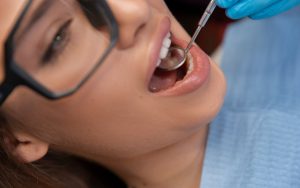Smoking is widely recognized for its harmful effects on overall health, but its impact on oral health is often overlooked. One of the most serious consequences of tobacco use is its strong connection to gum disease, a condition that can lead to tooth loss and other severe complications if untreated. What makes smoking particularly dangerous for gum health is its ability to mask early warning signs, allowing the disease to progress unnoticed.
This blog will explore the often-overlooked link between smoking and gum disease, explain how tobacco compromises the gums, and provide actionable insights for preventing and managing gum disease in smokers. By understanding this connection, you can take proactive steps to protect your oral health and overall well-being.
Understanding Gum Disease
Gum disease, also known as periodontal disease, is a progressive condition that affects the soft tissues and bone supporting the teeth. It begins with gingivitis, a mild form of the disease characterized by red, swollen, and bleeding gums. If left untreated, gingivitis can advance to periodontitis, a more severe stage where the gums pull away from the teeth, forming pockets that collect bacteria and debris. Over time, this can lead to bone loss, tooth mobility, and even tooth loss.
What makes gum disease particularly insidious is that it often progresses silently. In its early stages, symptoms may be mild or nonexistent, causing many individuals to overlook the importance of prompt treatment. Beyond poor oral hygiene, several factors contribute to the risk of developing gum disease, including genetics, systemic conditions like diabetes, and lifestyle choices such as smoking. Smoking, in particular, is a significant risk factor as it impairs blood flow to the gums, reduces the immune system’s ability to fight infections, and slows down healing processes.
Additionally, gum disease isn’t limited to oral health; it’s been linked to systemic conditions like heart disease, stroke, and respiratory problems. Understanding the causes and early signs of gum disease is crucial for prevention, especially for individuals with elevated risk factors such as smokers. Regular dental checkups and proactive care can make a significant difference in managing and preventing this common but serious condition.
The Link Between Smoking and Gum Disease
Does Smoking Cause Gum Disease?
Smoking is one of the most significant preventable risk factors for gum disease. Studies have shown that smokers are up to six times more likely to develop gum disease compared to non-smokers. The chemicals in tobacco, such as nicotine and tar, compromise the health of gum tissues by reducing blood flow, limiting the delivery of oxygen and nutrients. This creates an environment where bacteria can thrive, leading to inflammation and infection. Over time, this bacterial buildup contributes to the onset and progression of periodontal disease.
Smoking Effects on Gums
The effects of smoking on gum health go beyond bacterial growth. Smoking weakens the immune system, making it harder for the body to fight off infections. Additionally, it masks early warning signs of gum disease, such as bleeding and swelling, because it suppresses the inflammatory response. This delay in detection allows the disease to progress silently to more severe stages.
Tobacco Use and Periodontal Disease Progression
Smokers are also more likely to experience rapid progression of periodontal disease. The harmful effects of smoking reduce the effectiveness of treatments like scaling, root planing, and even surgery. This means that gum disease in smokers is not only more likely to occur but also harder to treat, requiring a more aggressive and long-term approach to management. Understanding this link is essential for preventing and addressing gum disease in smokers.
Symptoms of Smoking-Related Gum Disease
Smoking-related gum disease can often progress unnoticed due to the way tobacco masks common warning signs like gum inflammation and bleeding. However, there are specific symptoms that smokers should be aware of to detect gum disease early or address it before it worsens. These include:
- Redness and Swelling: Although less pronounced in smokers, gum tissues may still appear irritated or swollen.
- Persistent Bad Breath: Tobacco use can contribute to halitosis, which may also signal an underlying gum infection.
- Receding Gums: Gums may begin to pull away from the teeth, exposing more of the tooth and making it appear longer.
- Loose Teeth: As the disease progresses, the bone supporting the teeth can weaken, causing teeth to shift or feel loose.
- Formation of Deep Pockets: Spaces between the gums and teeth may deepen, trapping bacteria and food debris.
- Sensitivity: Exposed roots due to receding gums can result in heightened sensitivity to hot or cold temperatures.
- Tooth Discoloration: Smokers may notice an increase in yellowing or browning of teeth, which can be exacerbated by gum disease.
- Difficulty Chewing: As gums and teeth weaken, discomfort during eating or chewing may develop.
Recognizing these symptoms is crucial for smokers, as early detection and treatment can prevent more severe complications, including tooth loss. Regular dental visits are key to monitoring and addressing these warning signs.
Preventing Gum Disease for Smokers
Preventing gum disease as a smoker requires a combination of proactive oral care, lifestyle changes, and regular dental visits. While quitting smoking is the most effective step, additional measures can significantly reduce the risk of gum disease and support overall oral health. Here are the key ways to protect your gums as a smoker:
- Quit smoking to eliminate the primary cause of gum disease and improve oral health.
- Brush twice daily with fluoride toothpaste using a soft-bristled toothbrush to remove plaque and bacteria.
- Floss daily to clean between teeth where bacteria often accumulate.
- Schedule regular dental cleanings to remove tartar buildup and monitor for early signs of gum disease.
- Use an antibacterial mouthwash to reduce harmful bacteria and provide an extra layer of protection.
- Adopt a balanced diet rich in vitamins C and D, calcium, and antioxidants to strengthen gums and promote healing.
- Reduce sugary foods and drinks to minimize bacterial growth in the mouth.
These steps can help smokers significantly lower their risk of gum disease while maintaining healthier gums and teeth.
Treating Gum Disease in Smokers
Treating gum disease in smokers poses unique challenges due to the impact of tobacco on the healing process and immune response. The first step in treatment often involves scaling and root planing, a deep cleaning procedure that removes plaque and tartar from below the gumline. This process helps reduce bacterial buildup and inflammation, but its effectiveness can be limited in smokers because tobacco reduces blood flow to the gums, slowing healing and tissue regeneration.
For more advanced cases, surgical options like flap surgery or bone grafts may be required to repair damage caused by gum disease. However, smokers face a higher risk of complications during and after these procedures. Dentists often emphasize the importance of smoking cessation to improve treatment outcomes, as quitting can restore better blood circulation and enhance the body’s ability to heal.
In some cases, antimicrobial treatments or locally applied antibiotics may be used alongside mechanical cleaning to target persistent infections. Regular follow-up care is critical for monitoring progress and preventing relapse. Dentists may also recommend the use of prescription-strength mouthwashes or at-home periodontal trays to maintain gum health between visits. While treating gum disease in smokers requires a comprehensive approach, the combination of professional care, diligent oral hygiene, and a commitment to smoking cessation can significantly improve outcomes and restore gum health.
Frequently Asked Questions About Smoking and Gum Disease
Q: Does quitting smoking reverse gum disease?
A: While quitting smoking cannot fully reverse the damage caused by advanced gum disease, it significantly improves the prognosis. Once you stop smoking, blood flow to the gums improves, aiding in healing and making treatments more effective. Early-stage gum disease, such as gingivitis, can often be reversed with proper oral care and professional treatment after quitting.
Q: Are smokers more prone to tooth loss from gum disease?
A: Yes, smokers are at a much higher risk of tooth loss due to gum disease. Tobacco use weakens the structures supporting the teeth, including the gums and bone, accelerating the progression of periodontal disease. Studies have shown that smokers lose teeth at twice the rate of non-smokers.
Q: Can gum disease treatments work for smokers?
A: Gum disease treatments can be effective for smokers, but the outcomes are often less favorable compared to non-smokers. Smoking impairs healing and reduces the effectiveness of procedures like scaling, root planing, and surgery. Quitting smoking before or during treatment can greatly enhance results.
Q: How can I prevent gum disease if I continue smoking?
A: While quitting is the best option, maintaining excellent oral hygiene, using antibacterial mouthwash, scheduling regular dental cleanings, and adopting a nutrient-rich diet can help reduce the risk of gum disease even if you continue smoking. Regular dental visits are especially important for early detection and intervention.
Conclusion
Smoking has a profound impact on gum health, increasing the risk of gum disease and complicating treatment outcomes. While the effects of tobacco on oral health are serious, they are not irreversible. Quitting smoking remains the most effective step to improve gum health, enhance the success of dental treatments, and prevent further damage. For those who continue to smoke, adopting preventive measures, such as diligent oral hygiene and regular dental checkups, can help minimize risks.
At High Desert Dental, we are committed to providing compassionate, personalized care for all patients, including those affected by smoking-related gum disease. Our experienced team offers a range of treatments tailored to your needs, along with guidance on maintaining a healthier smile. Don’t wait to take control of your oral health—early detection and timely intervention are key.
Call us today at 505-888-2606 or visit us to schedule your appointment. Let us partner with you in protecting your gums, restoring your smile, and achieving lasting oral health. Your journey to better dental health starts here!





